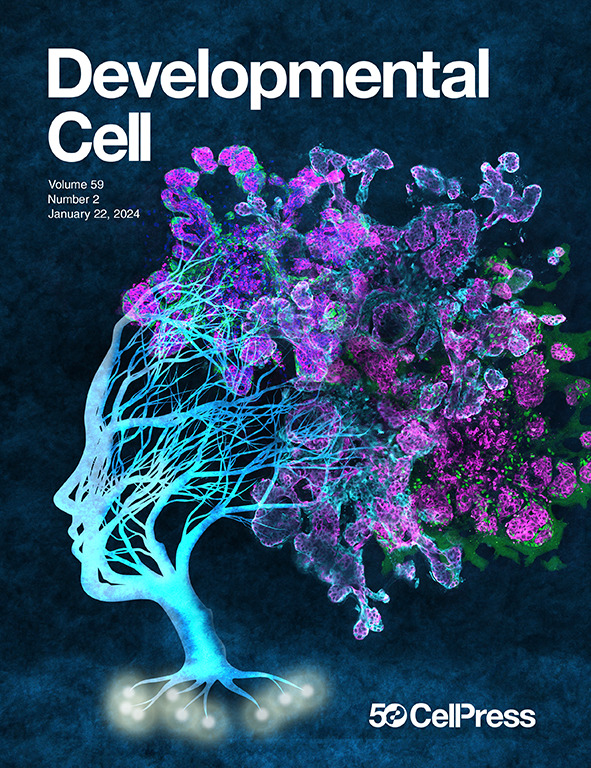生活在边缘:未承诺的opc样细胞驱动胶质母细胞瘤侵袭性
IF 8.7
1区 生物学
Q1 CELL BIOLOGY
引用次数: 0
摘要
胶质母细胞瘤的侵袭与间充质状态有关。然而,在这一期的Developmental Cell中,Wu等人发现肿瘤周围,未固定的少突胶质细胞祖细胞样细胞是劫持神经发育程序浸润脑实质的关键侵袭驱动因素,这表明靶向谱系分化和神经元-肿瘤网络可能限制胶质母细胞瘤的扩散。本文章由计算机程序翻译,如有差异,请以英文原文为准。
Living on the edge: Uncommitted OPC-like cells drive glioblastoma invasiveness
Glioblastoma invasion has been linked to mesenchymal states. However, in this issue of Developmental Cell, Wu et al. identify peritumoral, uncommitted oligodendrocyte progenitor-like cells as key invasive drivers that hijack neurodevelopmental programs to infiltrate the brain parenchyma, suggesting that targeting lineage differentiation and neuron-tumor networks may limit glioblastoma spread.
求助全文
通过发布文献求助,成功后即可免费获取论文全文。
去求助
来源期刊

Developmental cell
生物-发育生物学
CiteScore
18.90
自引率
1.70%
发文量
203
审稿时长
3-6 weeks
期刊介绍:
Developmental Cell, established in 2001, is a comprehensive journal that explores a wide range of topics in cell and developmental biology. Our publication encompasses work across various disciplines within biology, with a particular emphasis on investigating the intersections between cell biology, developmental biology, and other related fields. Our primary objective is to present research conducted through a cell biological perspective, addressing the essential mechanisms governing cell function, cellular interactions, and responses to the environment. Moreover, we focus on understanding the collective behavior of cells, culminating in the formation of tissues, organs, and whole organisms, while also investigating the consequences of any malfunctions in these intricate processes.
 求助内容:
求助内容: 应助结果提醒方式:
应助结果提醒方式:


